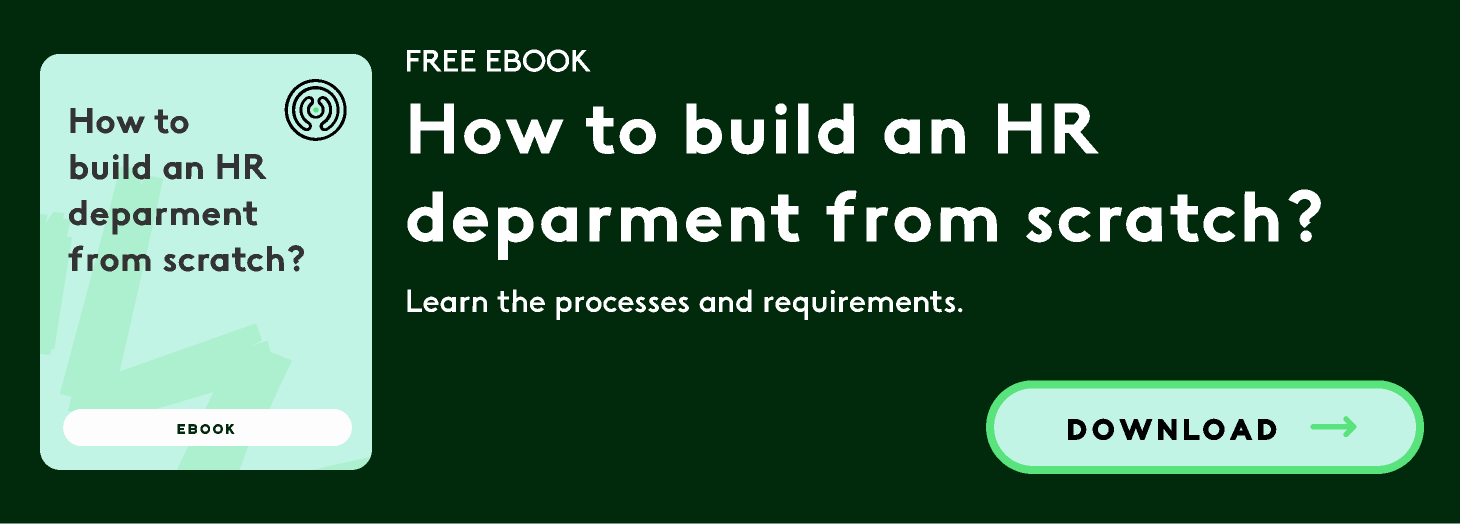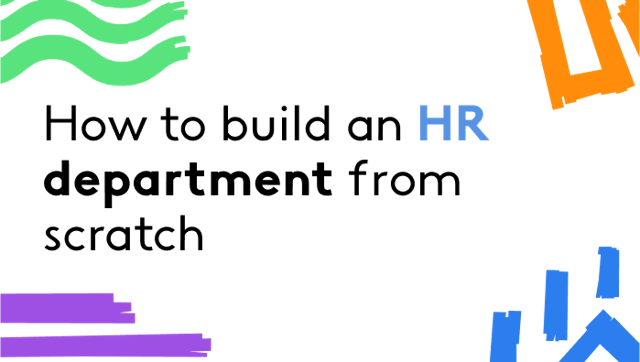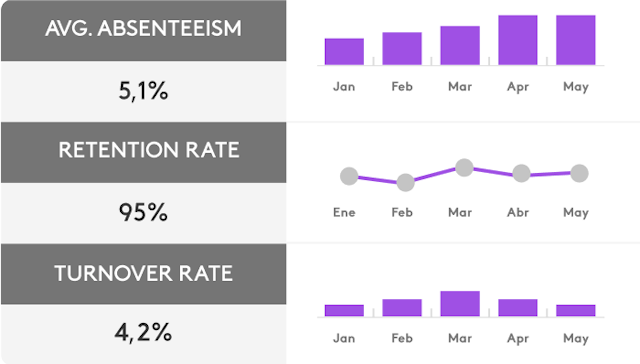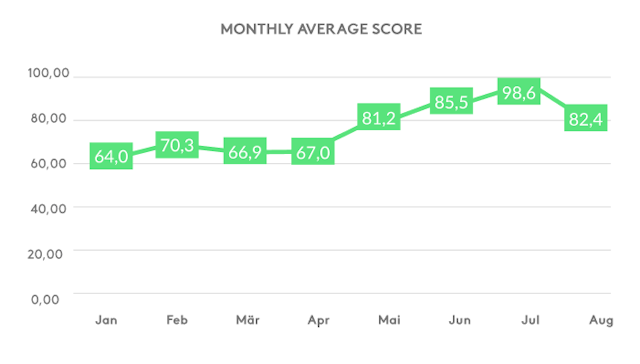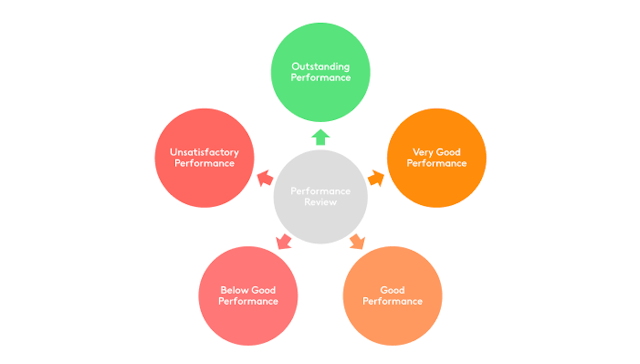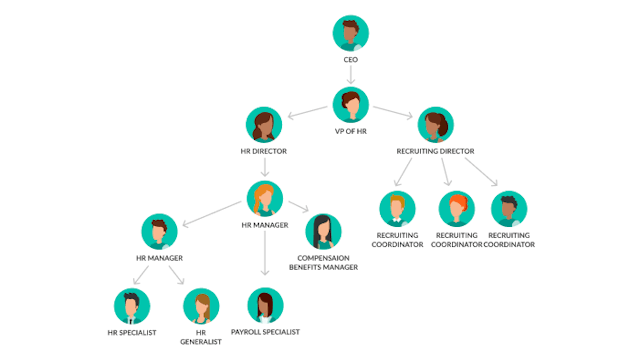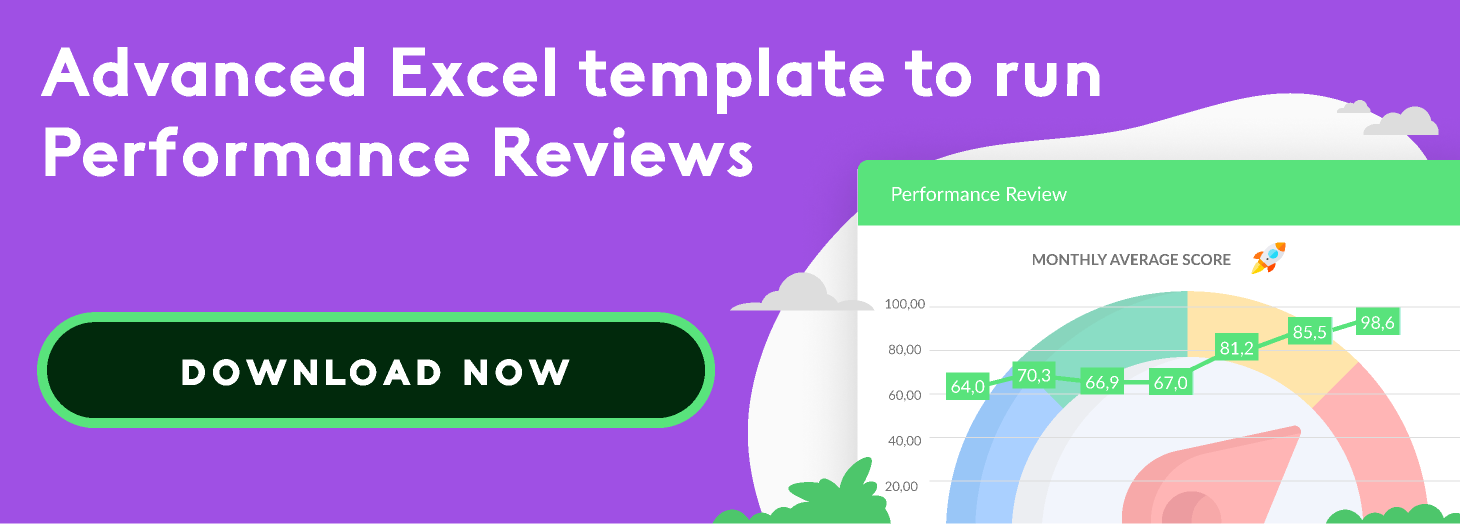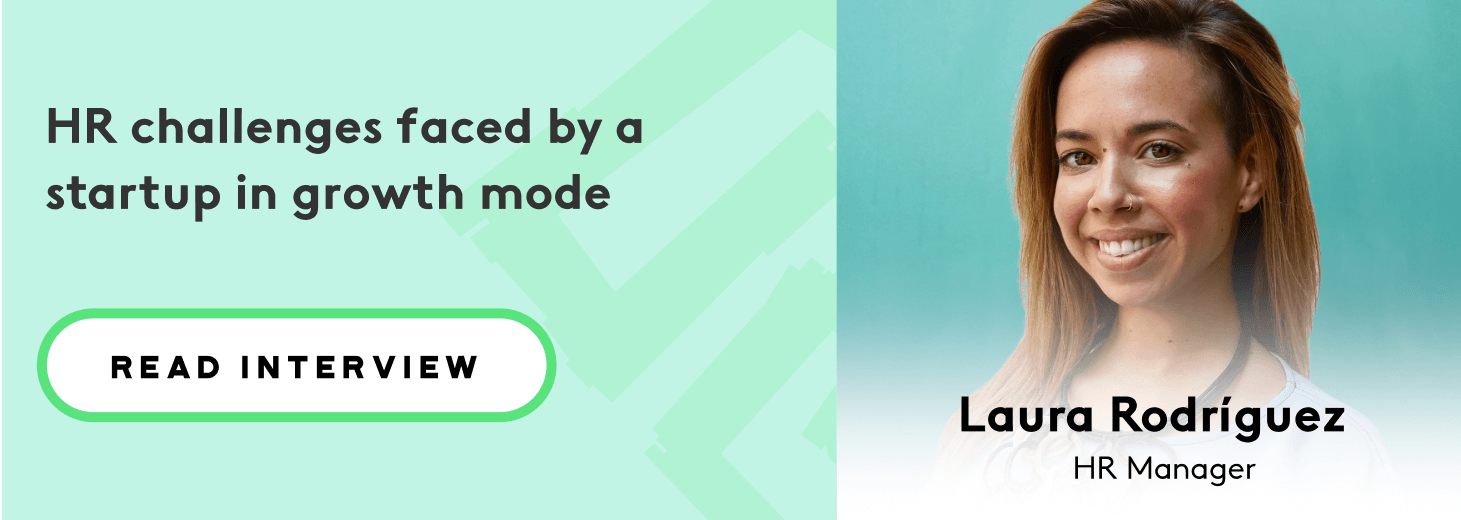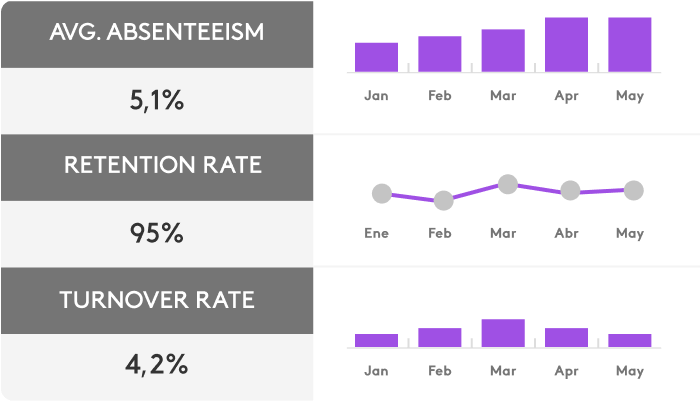Table of contents
The human resources department is becoming increasingly more important in a company’s growth and development. It’s impossible to reach your business objectives without a talented and satisfied workforce. It’s safe to say that human capital is the driving force of the company and the personnel department is the team of mechanics that ensure it is properly maintained.
To keep the gears of this motor in tip-top shape, it’s vital to keep up to date with new developments in the sector and to understand the dynamics of the constantly evolving labour market. Below we explain the key points to help you upgrade your human resources department and obtain the best possible results.
Functions of a HR department
Human resources is responsible for attracting and managing the company’s talent. The department’s main functions include:
- Staff recruitment and selection.
- Onboarding of new recruits.
- Staff training and development.
- Managing salaries, benefits and allowances.
- Absence, annual leave and time-off tracking.
- Employee performance evaluation.
- Creation of well-being policies.
- Creation of career paths and promotions.
Job roles in the human resources department
In order to perform all these tasks, it’s essential to build a team of specialists. The number of team members will vary according to the size of the company, however (we’ll discuss this a little later). The main job roles in human resources are:
The human resources manager: the person responsible for the department and is managed by the company director.
HR business partner: a professional that has a strategic role and supports all areas of the company to help them meet their objectives.
Recruitment specialist: this person’s role is to develop and execute talent attraction and recruiting processes when the company requires.
Independent recruitment specialist: this role is an alternative to the recruitment specialist, working outside the company and is contracted only when the need arises.
Training and development specialist: the person who holds this position focuses on designing and developing training programmes within the company.
Labour relations and payroll specialist: is responsible for drawing up contracts, payroll administration, annual leave planning, etc. They will also be an expert in employment law.
Internal communications specialist: this person manages the company’s internal communications according to a plan whose objective is to encourage a bi-directional communication flow.
ITC specialist: the digitisation of HR departments has triggered the need for a management tool expert.
Occupational health and safety specialist: responsible for ensuring compliance with occupational health and safety.
Skills required for working in a human resources department
Soft skills and hard skills are abilities that make us unique as professionals. The first relate to social aspects, such as empathy or the negotiation skills; the second are purely technical and are related to the knowledge we offer to carry out a specific role.
Soft skills are the most sought-after skills for human resources although a certain educational background is also required. Some of the most important skills include:
TOP SKILLS THAT EVERY HUMAN RESOURCES MANAGER SHOULD MASTER

ACTIVE LISTENING
Involves paying attention to the overall message, in terms of both verbal and non-verbal communication. Communication is fundamental in HR.
LEARNING CAPACITY
Acquiring new knowledge and skills is key in keeping up with new developments in the sector and being a good professional.
NEGOTIATION SKILLS
Resolving conflicts and knowing how to negotiate are some other basic HR skills Working in this area usually involves mediation and finding solutions.
ANALYTICAL AND ORGANISATIONAL SKILLS
Working in an organised way and knowing how to draw conclusions from analysis to reach objectives is crucial.
TEAM MANAGEMENT
Good team management reduces conflicts and creates a pleasant working environment.
ANALYTICAL SKILLS
Data analysis is key to improve and reach objectives, so an analytical vision is a highly valued skill.
TALENT MANAGEMENT
Another key skill for professionals in this sector is to identify, acknowledge, manage, develop and harness the organisation’s talent.
EMPATHY
Working with people requires large doses of empathy. This allows you to better understand other people’s problems and offer solutions.
WORKING WITH NEW TECHNOLOGY
Technology is an important part of skills All professionals should be able to use them and get the best out of them.
KNOWLEDGE OF EMPLOYER BRANDING
Employer branding is increasingly more important in HR, so it’s vital to know how to transmit a positive external image.
How to build a human resources department
Building a human resources department from scratch is a challenge yet also implies that the company is growing and that the business is on the right track. Nevertheless, you need to set the foundations and dedicate time in order to build a trustworthy team. As revealed in an interview with Lucio Fernández, a human resources director since 2007, “the biggest mistake you can make is to think that all the changes you want to make are viable and can be implemented from one day to the next.”
“The biggest mistake you can make is to think that all the changes you want to make are viable and can be implemented from one day to the next.”
The most important steps to follow when building a human resources department are:
1. Work on creating a company culture
Before you start to recruit new members for your team, create and spread a company culture within your organisation. Establish values and beliefs that define the entire workforce and make them special. This will make it much easier to find people that fit into the company.
2. Carry out selection processes
Choose professionals that are a better fit for your company and culture and that also possess the skills required for the job. Finding a balance is vital, as it’s pointless finding a professional who is highly competent at their job but who is not aligned with the company’s philosophy. Below is a checklist that may help you in this process:
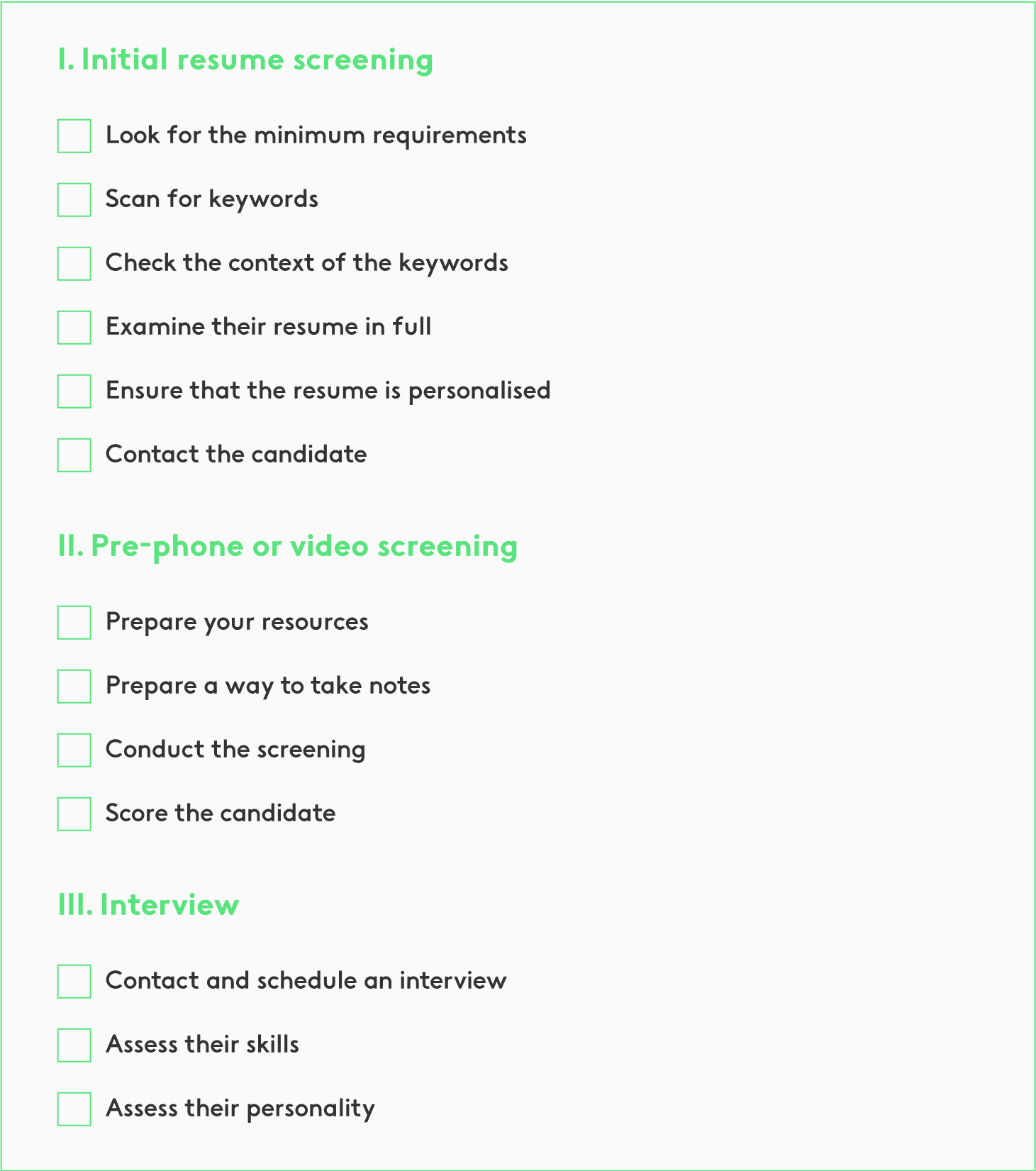
3. Align yourself with other departments
A successful HR department needs to work closely with the other areas. Arrange a kickoff meeting to align strategies, and then set up regular review meetings to enhance communication and teamwork.
4. Strive for continual improvement
Don’t stand still and always try to deliver the best results, optimise processes and keep up to date with new trends in the sector and the labour market. Success in HR means continuous improvement.
5. Make technology your ally
Technology is an indispensable member of your HR team. Choose a software that helps you automate tasks, optimise processes and save time, so that you can focus on what’s really important: people. There are two types of software: desktop and cloud based. The first are “traditional” software that are downloaded and installed on your computer; the second, however, use cloud technology that enables you to connect from anywhere and work with ease.
Download free resources for your HR department
Size of a human resource department
Size is a common query that arises when building a human resources department; in other words, “how many professionals do you need to manage a certain number of people?”
Contrary to what you might think, the HR-to-employee ratio is higher in small companies. This study reveals that SMEs need larger teams than big companies, as the latter have economies of scale in their favour. The general average is at 2.57 HR professionals per 100 employees, but this can be further refined according on the size of the company:

Small companies
3.4 professionals per 100 employees.

Medium-sized companies
1.2 professionals per 100 employees.

Large companies
1.03 professionals per 100 employees.
This therefore shows that a minimum number of professionals is required to carry out certain tasks. When the workforce reaches a certain size, however, the HR department doesn’t grow at the same pace.
What are the reasons for these parameters? There are several:
- Firstly, while the proportion may be smaller, large companies will always have more people in their HR department. They have more resources and, therefore, more flexibility to compensate the workload and distribute the resources.
- HR professionals in larger companies tend to be specialised in one area which makes them much more efficient and productive. In contrast, smaller companies usually have one person who deals with several tasks, and which requires a lot more effort.
- In larger companies with more generous budgets, there are proportionally less people in the HR team as they can afford to outsource certain tasks. When this happens, the HR-to-employee ratio tends to decrease while real costs usually increase.
Ultimately, the size of the department will depend both on the total number of employees and the growth forecast, and it will be the HR manager’s responsibility to find an ideal balance.
Organisation of a human resources department
When a personnel department has two or more people, there must be an organisational method; in other words, who does what and which is the optimum way of doing these tasks? While each company will find the model that suits their needs, there are certain setups or proven structures:
1. Structure for a department of two people
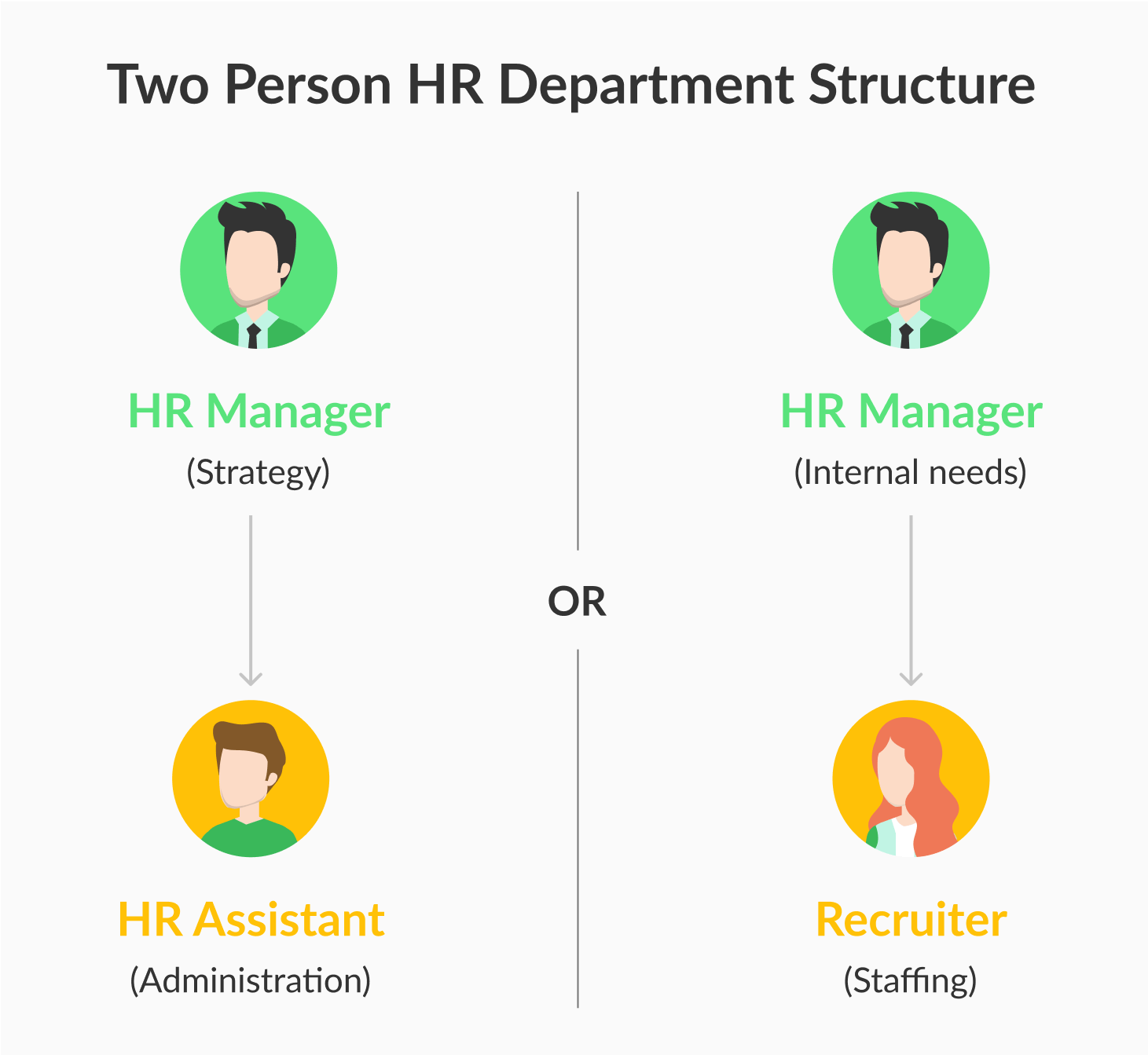
In a department of two people, one of them will logically be the HR manager. There are two options for the second person: hire an assistant or a recruitment specialist. In the first scenario, the manager deals with strategic aspects and the assistant, with more administrative tasks; in the second scenario, the recruitment specialist looks after all selection processes. The latter model makes particular sense in a company with a high staff turnover.
2. Structure for a department of three people
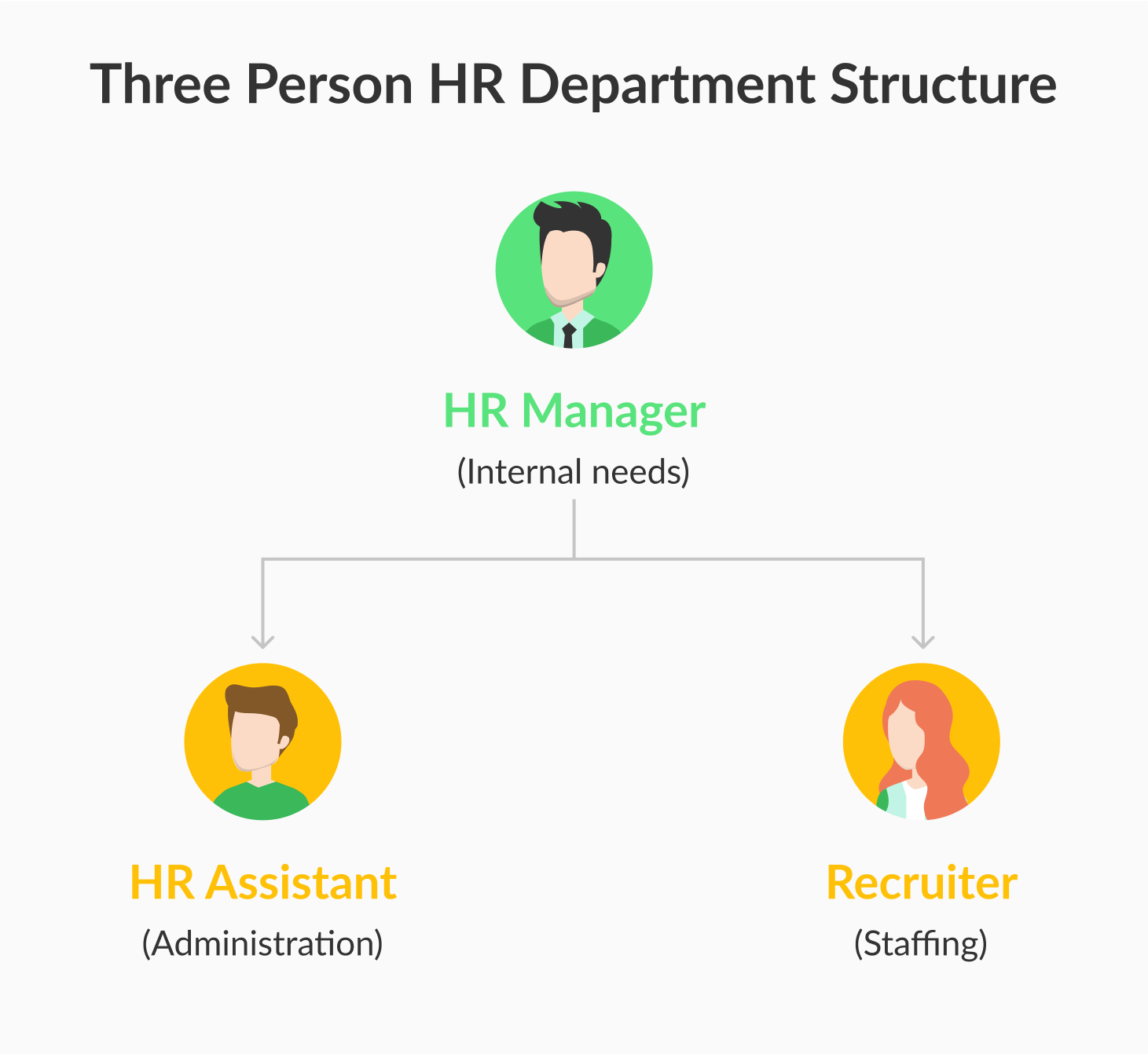
When a department grows to three people, you don’t have to choose: hire a recruitment specialist and an assistant. This is the structure that’s best suited to most companies. Many have experts in culture or development when the company reaches between 50 to 80 employees, because these are important areas. But these needs can also be outsourced if they aren’t on the top of your priority list.
3. Structure for a department of six people
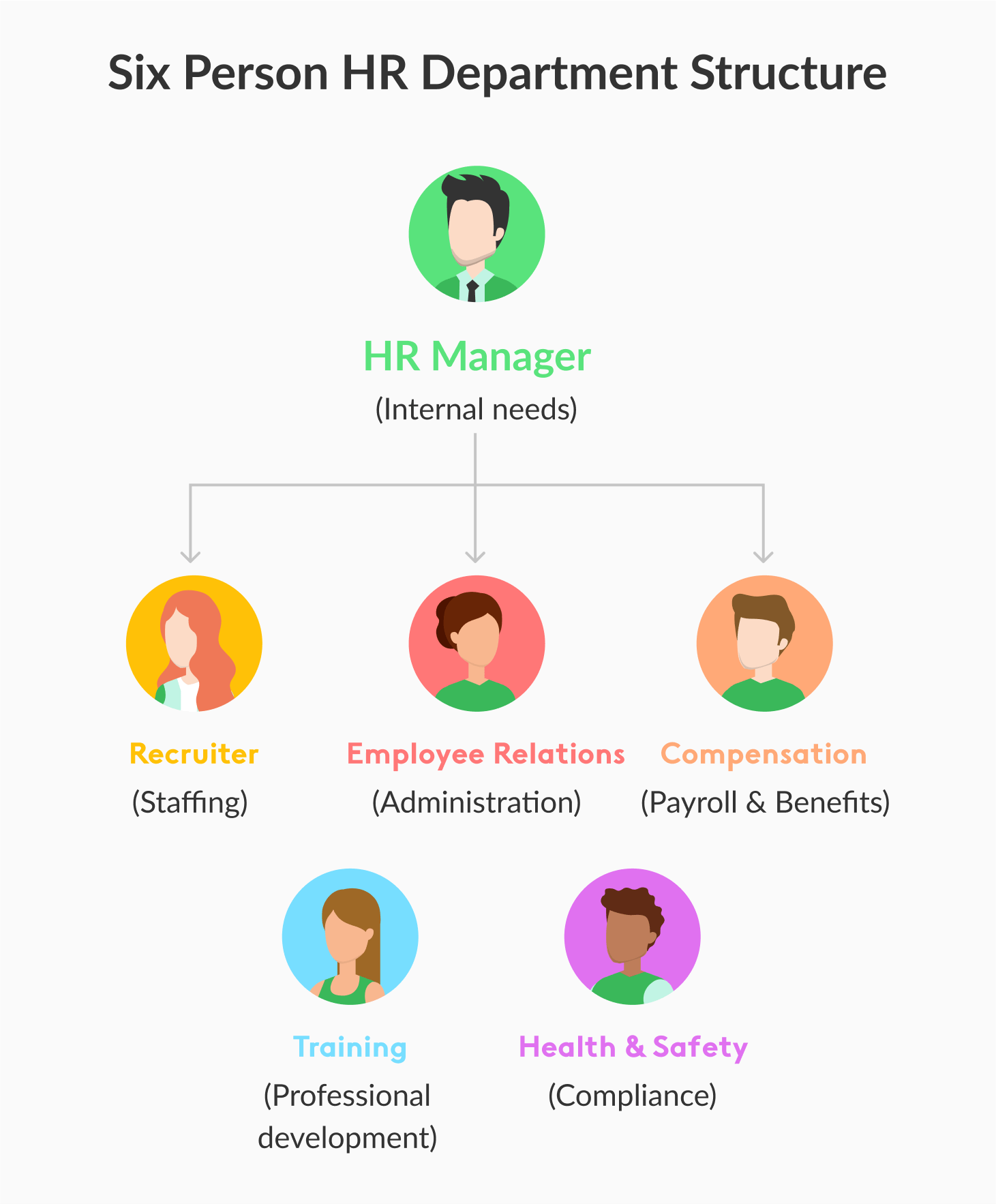
As the department grows, the best advice would be to hire specialists to carry out specific functions, and which are already related to the company’s main objectives. Above you can see an example of a six-person department in which everyone has specific tasks:
- HR Manager: handles strategy and approves all the important decisions alongside company directors.
- Recruitment manager: designs and carries out selection processes, reviews CV, performs interviews and selects candidates.
- Employee relations manager: carries out the onboarding process, performance appraisals and mediates in possible conflicts in the company.
- Compensation manager: creates compensation programmes, manages payroll and ensures that everyone is paid on time.
- Training manager: works directly with department managers to implement training programmes.
- Compliance manager: their role is to ensure that all employees comply with health and safety regulations and the appropriate medical checks.
This format ensures that all the HR departments needs are covered. It has a manager, and the horizontal structure enables the manager to keep up to date with all important projects and issues.
It’s also worth mentioning that this model enables managers to have an assistant to help them with their tasks: similarly, the manager could have an assistant manager who monitors the department’s works in closer detail.
We’d also like to share two organisational structure models for large companies:

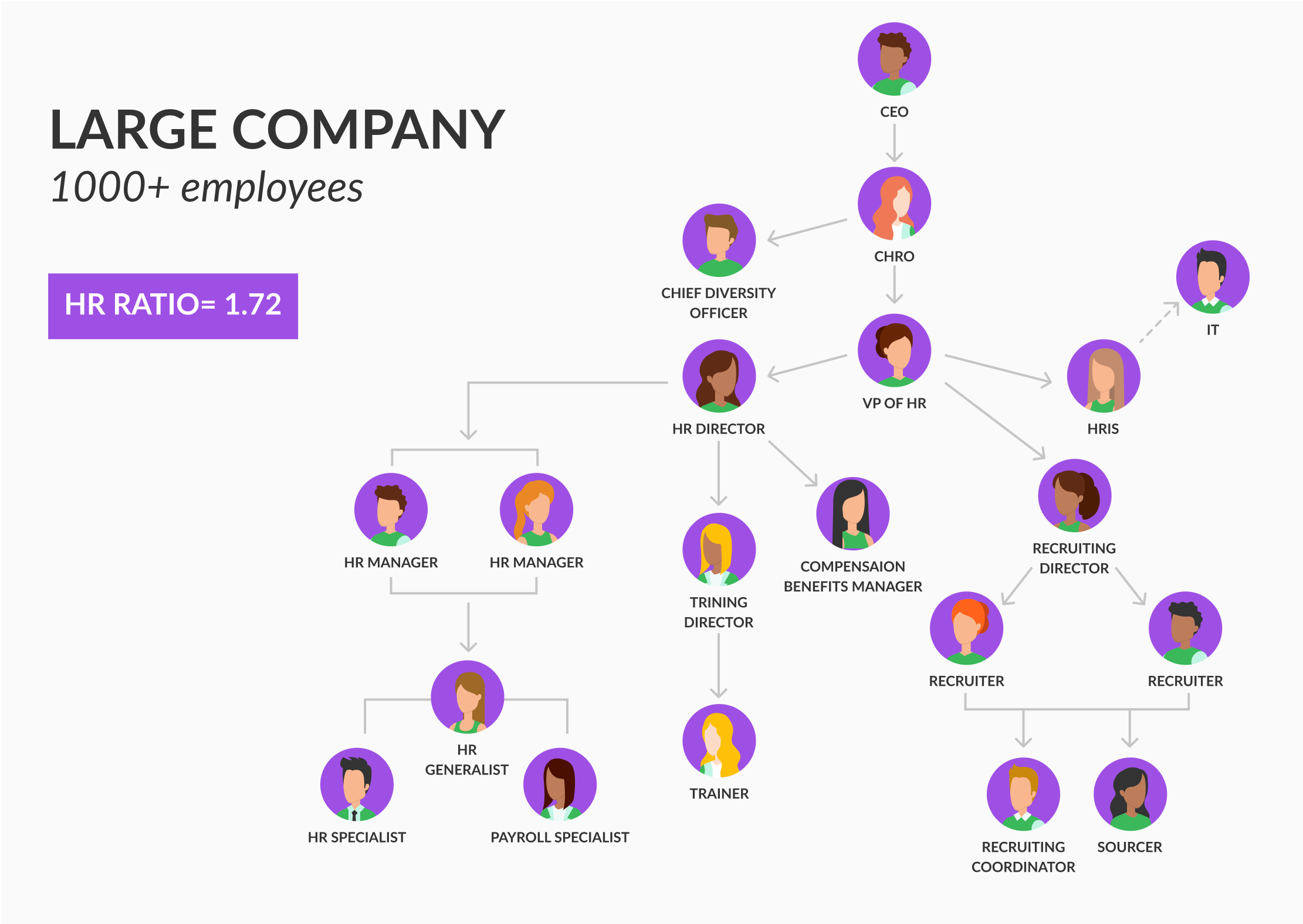
New human resources managements models
New models that aim to continually improve human resources management are arising and present interesting solutions for departments today. One of these is by Idalberto Chiavenato (2002) who analyses human resources administration as a process formed by interdependent subsystems integrated with each other:
CHIAVENATO MODEL: HR ADMINISTRATION SYSTEM
HR recruiting subsystem: Includes market research, labour, recruitment and selection.
HR workforce management subsystem: this subsystem covers role analysis and description, integration or onboarding, merit or performance appraisal and staff transfers.
HR compensation and benefits subsystem: includes remuneration, social benefits planning, occupational health and safety, staff records and tracking.
HR development subsystem: includes training and personal development plans.
HR data management subsystem: includes databases, IT systems for HR and audits.

It’s also worth mentioning the Competency management model that guarantees that the most appropriate person is assigned a specific task, according to their abilities, to take responsibility for the resulting duties. The aim is to secure the company’s success by analysing the reality of the business and the human resources available.
This model offers certain advantages:
- Identifies weak spots in a specific area.
- Obtains reliable results by using a measurable evaluation method.
- Increases employee efficiency.
- Fosters a pleasant working climate.
- Reduces absenteeism and the employee turnover rate.
- Improve the organisation’s general performance.
- Training and development.
- Career paths and promotions.
- Remuneration policies.
Steps for implementing a human resources strategy
The strategic role of human resources obliges the department to define its own strategy and contribute to overall objectives through the organisation’s human capital. We’d like to suggest 10 steps for defining and executing an effective strategy, as well as developing and providing services you need for company growth.
1. Understand the company strategy
Comprehending market forces, trends and the company’s commercial strategy is fundamental for establishing the HR department’s own priorities and objectives. The team’s job is to serve the company’s purpose.
With this in mind, there are three types of strategy that can be applied:
Low cost: the company may decide to compete in the market based on price and position itself as one of the cheapest. In this scenario, optimising the product or service’s business costs to the max is of utmost importance.
Product leadership: another strategy is to focus on product value, even though this means higher prices, and offer the best service before, during and after the sale.
Lock-in: lastly, the lock-in strategy entails launching products that are difficult to substitute or copy onto the market, and for which there will practically be no competition. This will ensure long-term customer loyalty.
2. Define the HR strategy
Create a roadmap that describes how the organisation will make the most of its human talent to face challenges and reach established objectives. In other words:
- Translate the organisation’s strategy into one which is adapted to HR’s vision and skills, set priorities and create an effective and feasible business plan.
- Define the HR strategy through initiatives, programmes and key people.
- Identify the best ways to attract, motivate and retain the different segments of the workforce.
Add guidelines, in addition, to assess and measure what you’re doing over time; in other words, some KPI objectives. On this point, a strategic map will be a great help (we’ll look at this later).
3. Segment the different HR audiences
Identify the critical human capital segments in the company and create specific programmes and services. For example, define which people or teams are key when achieving established objectives and assess their needs to create and adapt programmes and services accordingly.
4. Prioritise investment
The HR Department usually has an annual budget to manage and allocate. Make sure you prioritise investments by identifying all the department’s forthcoming projects, the costs and the benefits. This will enable you to allocate adequate funds to each one.
It’s also advisable to:
- Identify and develop criteria for prioritising investment and make sure that they are in alignment with company objectives.
- Analyse the cost, benefit and risk of every project.
5. Design services for HR audiences
Design and implement solutions that will prove critical when ensuring the effective implementation of the human resources strategy. You can do this by analysing all the departmental processes and identifying those that could be optimised or redesigned. In addition, review your current service offering and see if you need to add new solutions.
6. Guarantee a service delivery model
Design an adapted service delivery model for human resources. To do this:
- Analyse your current model and gauge whether it can effectively satisfy the organisation’s needs and objectives.
- Define specific roles and delivery options.
- Identify key systems, processes and infrastructure.
7. Establish the appropriate HR skills
Identify and develop the necessary skills, competencies and capacities that enable HR to fulfil its strategic role within the company. In addition, analyse the specific skills that need to be developed for creating training or recruitment plans to fill the most critical gaps.
8. Constantly improve the department’s operational excellence
Design support tools, new processes, etc., to help the HR team succeed in their daily tasks. Assess the efficiency of current activities and services with the help of KPIs and specific dashboards to detect areas for improvement.
9. Build HR branding
Understand and communicate the value of the personnel department within the company. You can achieve this by developing and implementing a communication plan and seek qualitative feedback.
10. Measure the impact of HR products and branding
Identify the most important KPIs to monitor the department’s performance and return on investment. This will enable you to:
Keep your strategy on track and achieve the desired results.
Identify the most successful measures and achieve a balance between the value they bring and the costs they generate.
In short, design a dashboard to analyse the impact of HR, the value generated, and the costs incurred.
Create a strategic map within the HR department
As we’ve just seen, the measures carried out by HR must be backed by a defined strategy that is aligned with both the objectives of the department and the company. This plan could be represented via a conventional document or a strategic map that, in a more visual format, gives you a clear, at-a-glance understanding of how HR measures connect with company objectives.
What is a human resources strategic map?
They say a picture’s worth a thousand words and, when talking about strategic maps, it’s true. This tool is a visual representation of a strategy or an organisation, or one of the areas within it. It describes the measures and decisions that are to be taken to improve the company’s positioning and reach its objectives.
As this video explains, to make one you just need a page and a diagram that shows objectives and measures, then connect them to each other according to their cause and effect. Rows are normally created for each important objective and within them, secondary targets are added into an oval shape. Arrows are then drawn to join these objectives to illustrate how they are interconnected. You can also use colours (red, green and yellow) to indicate the status of each objective.
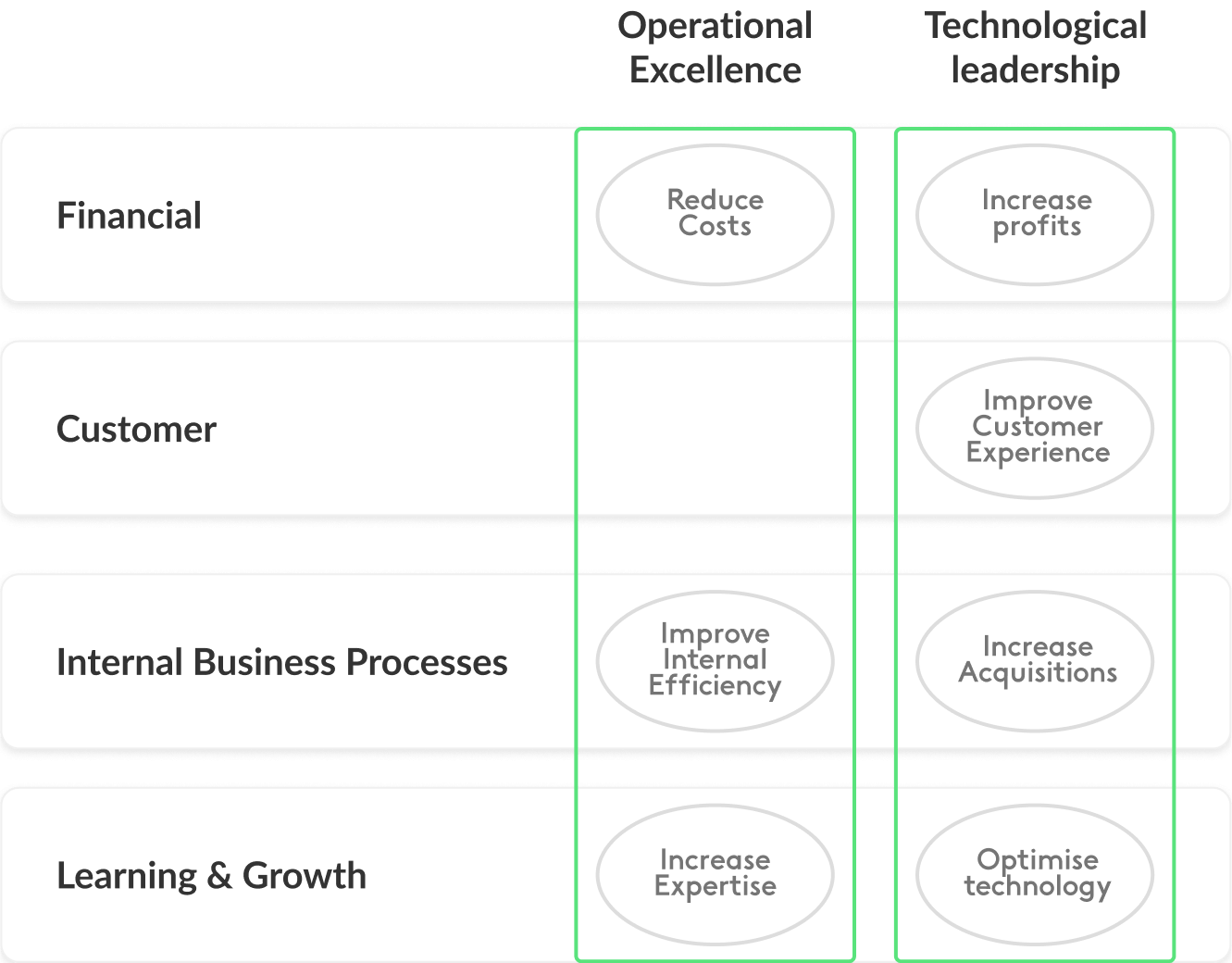
The example below shows the strategic map of a non-profit organisation. Their main objective is that their clients are satisfied, and to achieve this they also need to ensure their volunteers are satisfied. That their workers feel like part of the team. They need to work on three areas to achieve this: recruitment, training and commitment. Specific tasks have been assigned in each of the three areas.
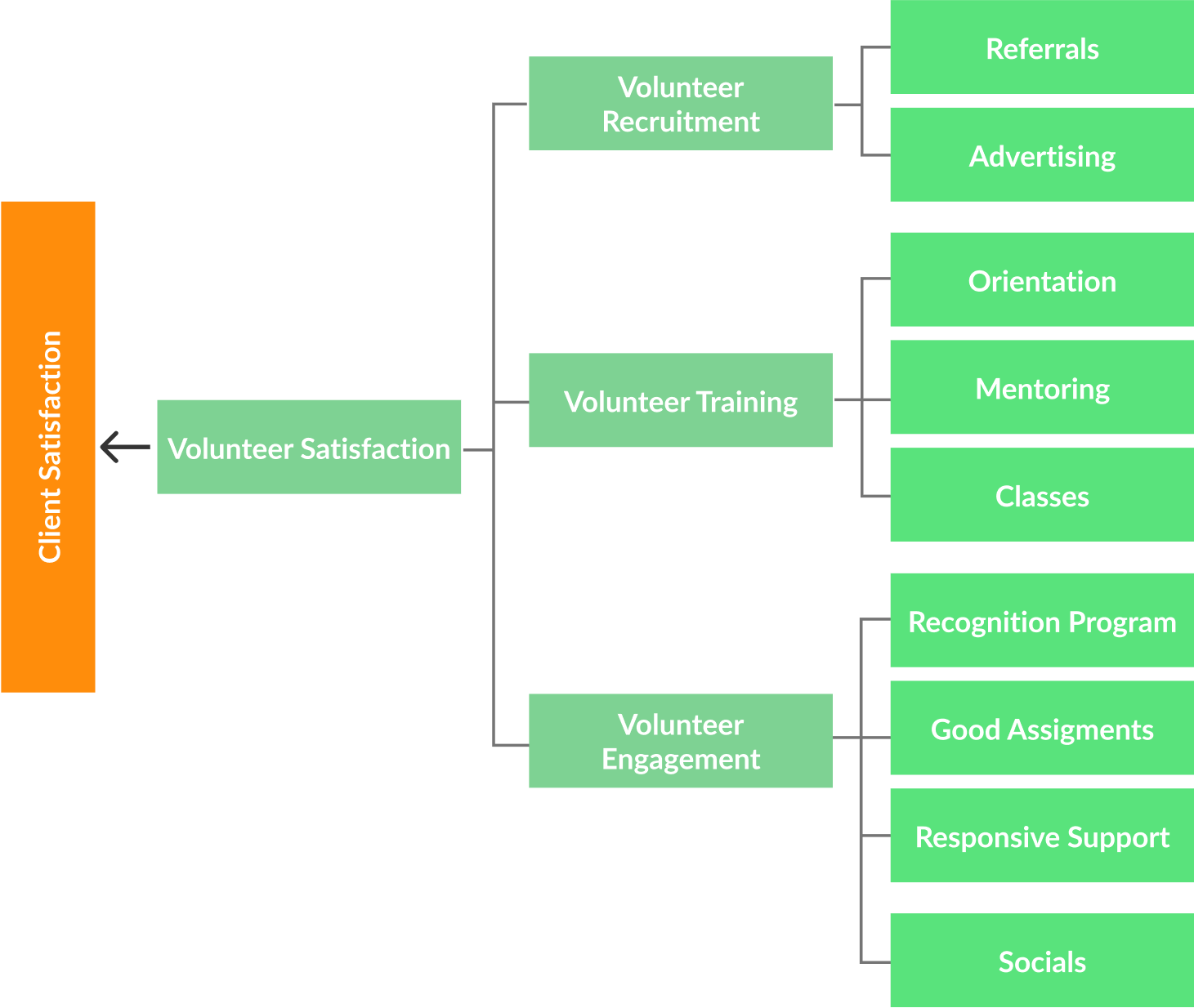
Why use a HR strategy map?
Having clear and well-presented objectives will help you reach them with greater ease. That’s why using a strategy map offers significant benefits. Here we’ve listed just a few:
ADVANTAGES OF USING AN HR STRATEGY MAP
Offers readily-available relevant information to help you make better decisions.
Helps you set clear objectives.
Communicates the department’s objectives and how they will be reached.
Helps to identify and link the company’s internal processes.
Enables managers to assess how objectives have been met and allocate resources to initiatives that contribute most to the strategy.
Ultimately, this is an extremely useful tool for any company.
Objectives of a human resource department
We’ve discussed how to create a company strategy but there is one area of this which is critically important, and therefore deserves a chapter of their own: the objectives. The targets of a human resources department usually depend on the overall company strategy. If, for example, the company plans to expand to new markets, the department’s success will be measured by its ability to create a suitable team for this purpose with the minimum costs.
These are specific objectives, but all HR departments tend to work towards general objectives. Some of the most important of these are:
- Align company strategy with HR Human resources must align its actions with company strategy to help it meet its overall objectives.
- Attract and retain the best talent: a company’s success depends on its human capital. The HR Department must find the best professionals and retain them in the long term.
- Guarantee a good workplace climate: employee well-being is closely linked to productivity, so a satisfied and motivated team will offer better results than one that isn’t.
- Look after your employer branding: an organisation with an attractive company culture will, in turn, have an interesting employer branding and will more easily attract talent.
- Specific: a KPI should refer to a specific task or action. For example: reduce the rate of employee absenteeism by 2%.
- Measurable: if it can’t be measured, then we cannot interpret the data nor use specific tools to do so.
- Achievable: the KPI objectives you set must be achievable under the conditions you have.
- Relevant: it’s also important to ensure that the metrics you choose are relevant to your business and that they add valuable information.
- Timely: finally, each KPI must be limited to a time period and be subject to regular reviews.
KPIs of a human resources department
Once you have your strategy and objectives, you need to monitor them to check you’re on the right track. Why? HR’s strategic importance has led to a series of consequences, and among those is a growing interest in the results of measures implemented and obtaining valuable information that enables the company make better decisions. To do this, the HR sector has started working with KPIs. In other words, performance indicators that enable you to evaluate the department’s work.
What are the main KPIs of a human resources department and how do you calculate them?
7 MOST IMPORTANT KPIS TO WORK WITH IN THE HUMAN RESOURCES DEPARTMENT
Employee satisfaction levels
You can measure the company’s work climate by sending surveys, so that the team can score their satisfaction levels within the company. Then just calculate the average and violà!
Employee turnover
What is the average time an employee stays in the company? The formula is simple: the number of employees who leave the company during a year divided by the average number of employees in the company in that year. Then multiply that figure by 100 to get your annual turnover rate. ([L/Avg] x 100) A high volume could be a sign of a negative work climate, low salaries, lack of promotional prospects, etc., and this costs the company money.
Rate of employee absenteeism
This KPI measures the percentage of contracted hours that were not worked due to all types of absences (whether authorised or not). It can be calculated by dividing the total number of hours not worked by the total number of contracted hours. Reducing employee absenteeism is one of the HR department’s main concerns but you need statistics as a base for tackling this.
Average recruitment time
This metric calculates the average time from publishing a job advert to the day a new recruit joins the company. To discover this, just calculate the average of the time taken for every recruitment process carried out during a certain period of time. This is an important KPI as a position that is unfilled for a long period of time costs the company money.
Recruitment costs
This indicator looks at the sum of all costs related to hiring a new employee. It includes recruitment costs (advertising, time invested, ATS and other software…) as well as training costs (education, materials…).
Recruitment conversion rate
To find out which platforms deliver better results in finding candidates for a position we can calculate the conversion rate: The formula: (No. of candidates selected / total No. of candidates) x 100.
Workplace accidents
This KPI enables you to gauge whether your occupational health and safety measures are being correctly implemented and are effective. The correct way to calculate this is as follows: (number of accidents / 1,000,000 / number of hours worked by people exposed to the risk.)
We can dig much deeper into human resources KPIs. The most important thing is that each company finds metrics that are the most useful to them, and a long-term model that enables them to get a historic record and monitor the measures they carry out.
Once you’ve chosen them, it’s also vital to create a dashboard that enables you to understand, at a glance, at which point the department currently finds itself and its progress in relation to the established objectives. There is a multitude of options, but this one suggested by Deloitte is particularly interesting:
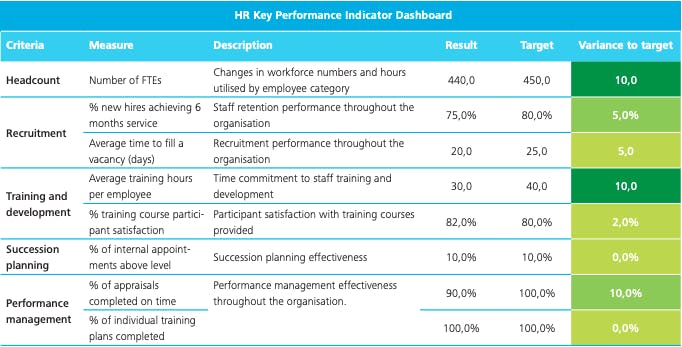
They call it the HR Scorecard and they use this dashboard as a tool to measure HR’s contribution the organisation’s overall performance. It therefore includes key indicators on return on investments and the different measures taken. In addition to including a description of every KPI, it also includes a column with the objective, the result and the variance. In this case, the results are positive, so they are marked in green.
How have human resources departments evolved?
Human resources departments have evolved significantly since companies started to proactively manage staff during the Industrial Revolution. Workers were seen as a cost to be minimised at that time, and all efforts were focused on towards this, as well as control and discipline.
However, this area has gradually become more modernised and gained new functions. In the beginning they were extremely limited, managing only payroll, recruiting and administrative tasks; over time, however, the HR Department has adopted a more influential and leading role in company strategy.
This picture illustrates the different stages through which HR departments have passed and the dynamics that were common at every stage.
PHASE
End of the 19th century, beginning of the 20th century
TITLE
Personnel manager
CHARACTERISTICS
- The personnel manager focusses on control, economic incentives and discipline.
- Personnel management was considered less important than other areas. The tasks performed were mainly administrative in nature and the person in charge of this area was considered to a subordinate.
- During this period, workers were thought of as a cost that should be kept to a minimum.
PHASE
Up until the 1960s
TITLE
Industrial and labour relations manager
CHARACTERISTICS
- Companies began to instil ideas from the human relations school and started to evaluate social and psychological issues to improve workers’ performance: motivation, measures to facilitate a work-life balance, etc.
- During this period, workers began to be recognised as a resource for development, and more than just a cost.
PHASE
The 1970s and 1980s
TITLE
Human resources manager
CHARACTERISTICS
- In this period, the human resources manager became recognised as a key player in achieving business objectives.
- There is a realisation of how important people are in a company’s development. The link between human resources and competitive advantage becomes apparent, and that these resources should be optimised.
PHASE
End of the 1990s, beginning of the 21st century
TITLE
Strategic human resources manager
CHARACTERISTICS
- The role of human resources is now deemed as strategic, occupying a place on the management board and collaborating in the definition of the company’s plans and objectives.
- Human capital is considered to be the most important competitive resource: employees are resources that should be motivated, developed and in which to invest.
Human resources departments nowadays are experiencing huge transformation on many levels but, above all, in terms of their role within the company. In fact, many organisations have decided to change the department’s name to reflect this new vision: People management, People and values, Talent management...
When should you outsource the HR department?
Outsourcing HR involves contracting a company to do the tasks this department would normally carry out. When should you opt for this model? It depends on the situation and the size of the company:

Small companies
(0 - 10 employees)
When an owner starts up a business, they usually think they can do everything themselves: payroll, annual leave management, recruiting, etc. But over time, outsourcing at least some HR functions becomes a logical step. It is possible to hire a company to look after this or use an HR software. that simplifies many of these tasks.

Growth companies
(10 - 50 employees)
During this phase of growth the company would undoubtedly have a HR Manager and would be assessing the possibility of recruiting a second team member. Before doing this, they should check the possibility of outsourcing tasks (payroll, recruitment...) and the support of a specific software.

Medium-sized companies
(50 - 500 employees)
A company of this size should have a small HR team to manage workers and be responsible for implementing the strategic plan. On this point, it’s also important to incorporate experts into your team to optimise departmental work processes.

Large companies
(500+ employees)
A company of this size will usually internalise all the department’s tasks again, as it will be much more advantageous and competitive. Nevertheless, HR software also enables you to automate tasks and optimise processes.
Some of the advantages of this model are:
- Reduces in salary costs, recruitment, etc.
- Less mistakes as the work is being carried out by experts.
- Improves the quality of new recruits.
- Increases business competitiveness.
- Improvements in service quality.
- More free time to spend on more important tasks.
- Loss of control.
- The impact on the employer/employee relationship.
- Loss of flexibility.
Challenges for human resources professionals in 2024
The labour market is changing by leaps and bounds, bringing with it new ways of working and managing talent. HR departments are faced with the great responsibility of adapting to these new times and ensuring that their work contributes to the company’s success. SomeHR statisticsstate that 70% of the professional surveyed are willing to invest in digital solutions for the HR department. In Kenjo, we have seen many professionals stop using excel files to track time off and attendance to start using digital HR software.
CHALLENGES THAT HUMAN RESOURCES PROFESSIONALS ARE FACING IN 2024
Attracting talent: professionals tend to be more and more demanding when committing to a company and like to feel lured by them. Offering a pleasant working environment and benefits like flexible working hours, career plans, etc., are key factors when attracting talent.
Address digitisation: automation, big data and artificial intelligence are words which every professional in the sector should know in the 21st century. Nowadays, technology is available to all human resources departments to automate tasks, optimise processes and ultimately, make it so much easier to reach established objectives. Nowadays there are differents types of human resources softwares which do all these functions.
Add value to company strategy: as we mentioned previously, HR has the capacity to strongly influence the company’s results. Ensuring that the department makes a positive impact on business objectives should be a priority. This can be achieved by building a team with a holistic vision of HR; in other words, a team that sees the company as a whole and are prepared to add value in other business areas. Some extremely interesting insights and conclusions can be drawn from the HR department.
Improve the management of employee data: the use of data in human resources is called people analytics. And today, these departments handle and store a huge amount of data and are often not making the most of it. New technologies filter this information to draw conclusions that help improve the personnel department’s performance.
Learn how to manage change: we live in a changing environment and one in which new working models and professional profiles are emerging. Adapting to the new situations presented by the market, society and the sector is vital.
Retain talent: each new recruit in the company represents an economic cost: loss of production while the position is vacant, advertising in job portals and the time spent on recruitment processes. This is why many companies are making more and more effort to retain existing talent. Yet today, this is a challenge in itself. As we heard in an interview with Lisa Maria, Marketing Manager for the job app Truffls “staying in the same job for more than two years is a rarity today. Professionals want a lot and they want it now, and if they can’t get it, they’ll go somewhere else.”.

